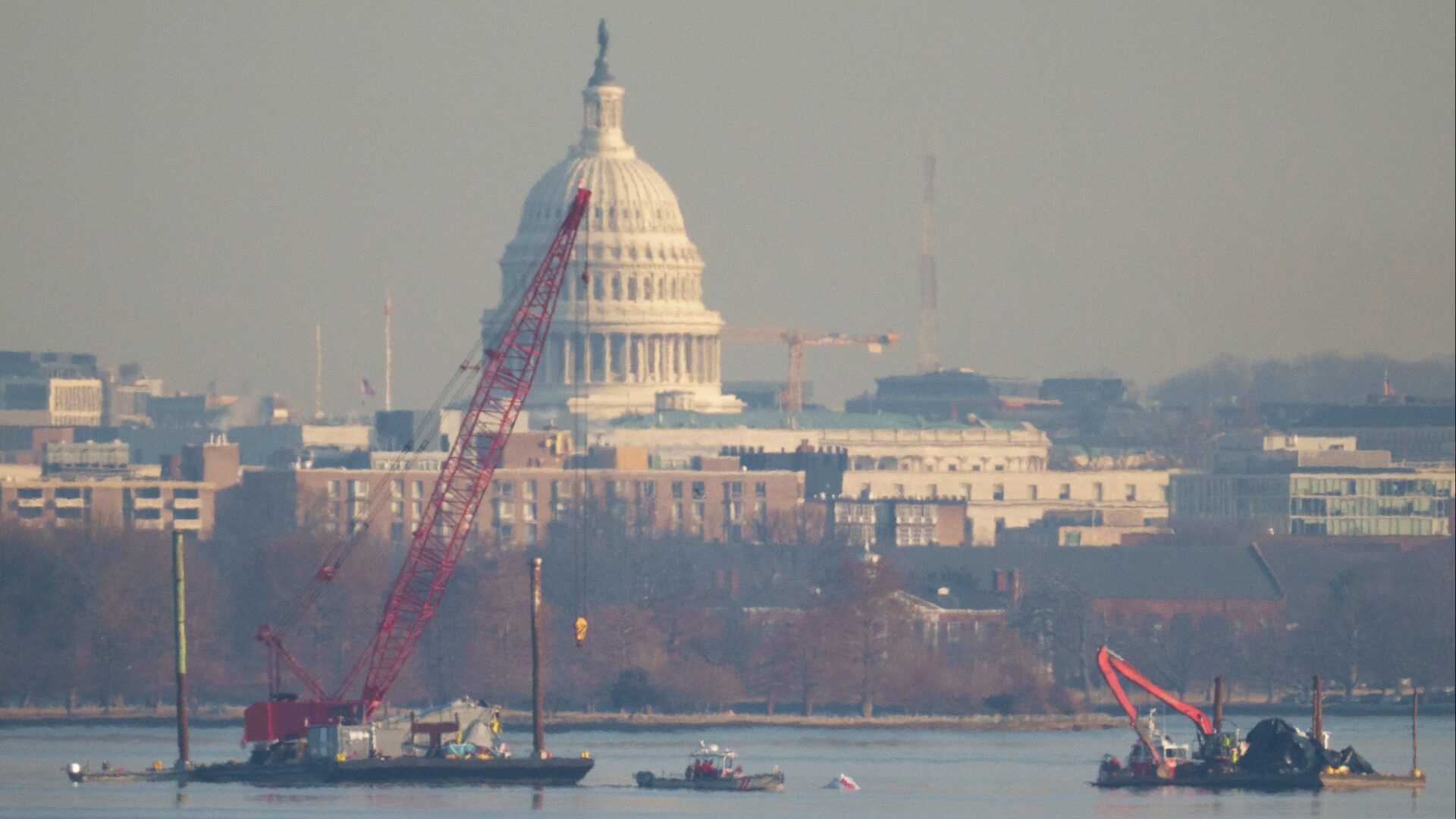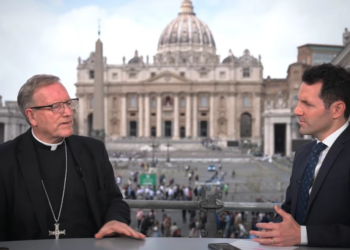
New details have emerged surrounding the fatal crash near Reagan National Airport in Washington, D.C., that claimed the lives of 67 people on January 29, when a U.S. Army Black Hawk helicopter collided with an American Airlines passenger jet.
The incident occurred as an American Airlines flight arriving from Kansas was preparing to land.
Both the Black Hawk helicopter and the regional passenger jet collided in midair, resulting in a fireball that sent both aircraft plunging into the Potomac River.
Trump’s Sovereign Wealth Fund: What Could It Mean For Your Money?
All 67 passengers and crew aboard the civilian jetliner perished in the crash.
According to new findings reported by the New York Times, the Black Hawk and its three-member crew were alerted by air traffic controllers to a regional jet operating nearby.
The helicopter crew acknowledged the alert and indicated they had visual contact with the other aircraft.
Following the acknowledgment, one of the Black Hawk pilots requested authorization to use “visual separation,” a practice that permits pilots to independently maintain safe distances from other aircraft without continuous direction from air traffic controllers.
This Could Be the Most Important Video Gun Owners Watch All Year
The controller granted the request, responding, “Visual separation approved.”
Visual separation requests are a common practice in controlled airspace, and most are executed without incident.
However, aviation experts have long cautioned that even minor errors during visual separation maneuvers could have serious consequences.
REPORT: The female pilot flying the Black Hawk helicopter that collided with an American Airlines flight, made multiple mistakes and ignored a warning from her co-pilot, according to the New York Times.
Tragic.
The New York Times reports that there were multiple mistakes made… pic.twitter.com/duetUVd16J
— Collin Rugg (@CollinRugg) April 27, 2025
On January 29, the Black Hawk crew was unable to perform visual separation effectively.
Reports indicate that the Black Hawk pilots either did not identify the specific passenger jet or failed to maneuver away from it safely.
At 8:48 p.m., just one second before the collision, the Black Hawk was still on a collision course with the passenger jet.
Investigators, after interviewing more than 50 aviation officials and experts familiar with the probe, found that multiple mistakes were made by the Black Hawk crew leading up to the crash.
Analysis determined that the Black Hawk was flying at a higher altitude than it should have been.
In the final moments before impact, the pilot failed to act on a directive from her co-pilot, an Army flight instructor, to alter course.
Compounding the problem, radio communication between the helicopter crew and air traffic control reportedly broke down.
Some of the controller’s instructions were “stepped on,” meaning transmissions were interrupted when the helicopter crew attempted to transmit at the same time, causing important information to be missed.
In addition, equipment on the Black Hawk that would have allowed air traffic controllers to better monitor the helicopter’s location had been turned off.
According to Army protocol, this is standard procedure for military helicopters operating sensitive or high-profile transport missions in the D.C. region.
The investigation also found shortcomings on the part of air traffic control.
Although the Black Hawk crew was informed of nearby air traffic and authorized to proceed with visual separation, aviation experts told the outlet that the air traffic controller failed to issue urgent or clear instructions that might have averted the crash.
Brigadier General Matthew Braman, the Army’s director of aviation, commented on the findings, stating, “I think what we’ll find in the end is there were multiple things that, had any one of them changed, it could have well changed the outcome of that evening.”
The investigation into the fatal collision remains ongoing.
Connect with Vetted Off-Duty Cops to Instantly Fulfill Your Security Needs

![New Details Emerge Surrounding Black Hawk-Jet Crash That Killed 67 Passengers [WATCH]](https://www.right2024.com/wp-content/uploads/2025/04/New-Details-Emerge-Surrounding-Black-Hawk-Jet-Crash-That-Killed-67-750x375.jpg)
![Stephen Miller Announces New Goal for ICE Mass Deportation Effort [WATCH]](https://www.right2024.com/wp-content/uploads/2025/05/Stephen-Miller-Announces-New-Goal-for-ICE-Mass-Deportation-Effort-350x250.jpg)


![Simone Biles Defends Trans Pitcher and Mocks Riley Gaines, It Doesn’t Go Well [WATCH]](https://www.right2024.com/wp-content/uploads/2025/06/Simone-Biles-Defends-Trans-Pitcher-and-Mocks-Riley-Gaines-It-350x250.jpg)

![LAPD Praises 'Peaceful' Rioters as They Set Cars on Fire and Attack Feds [WATCH]](https://www.right2024.com/wp-content/uploads/2025/06/LAPD-Praises-Peaceful-Rioters-as-They-Set-Cars-on-Fire-350x250.jpg)

![Fans Shocked as Katy Perry Stops Concert After She’s Ambushed by Deranged Fan Onstage [WATCH]](https://www.right2024.com/wp-content/uploads/2025/06/Fans-Shocked-as-Katy-Perry-Stops-Concert-After-Shes-Ambushed-350x250.jpg)
![LA Protest Casualty? Dead Body Found as Riots Stretch Into Fifth Night [WATCH]](https://www.right2024.com/wp-content/uploads/2025/06/1749642627_LA-Protest-Casualty-Dead-Body-Found-as-Riots-Stretch-Into-350x250.jpg)






